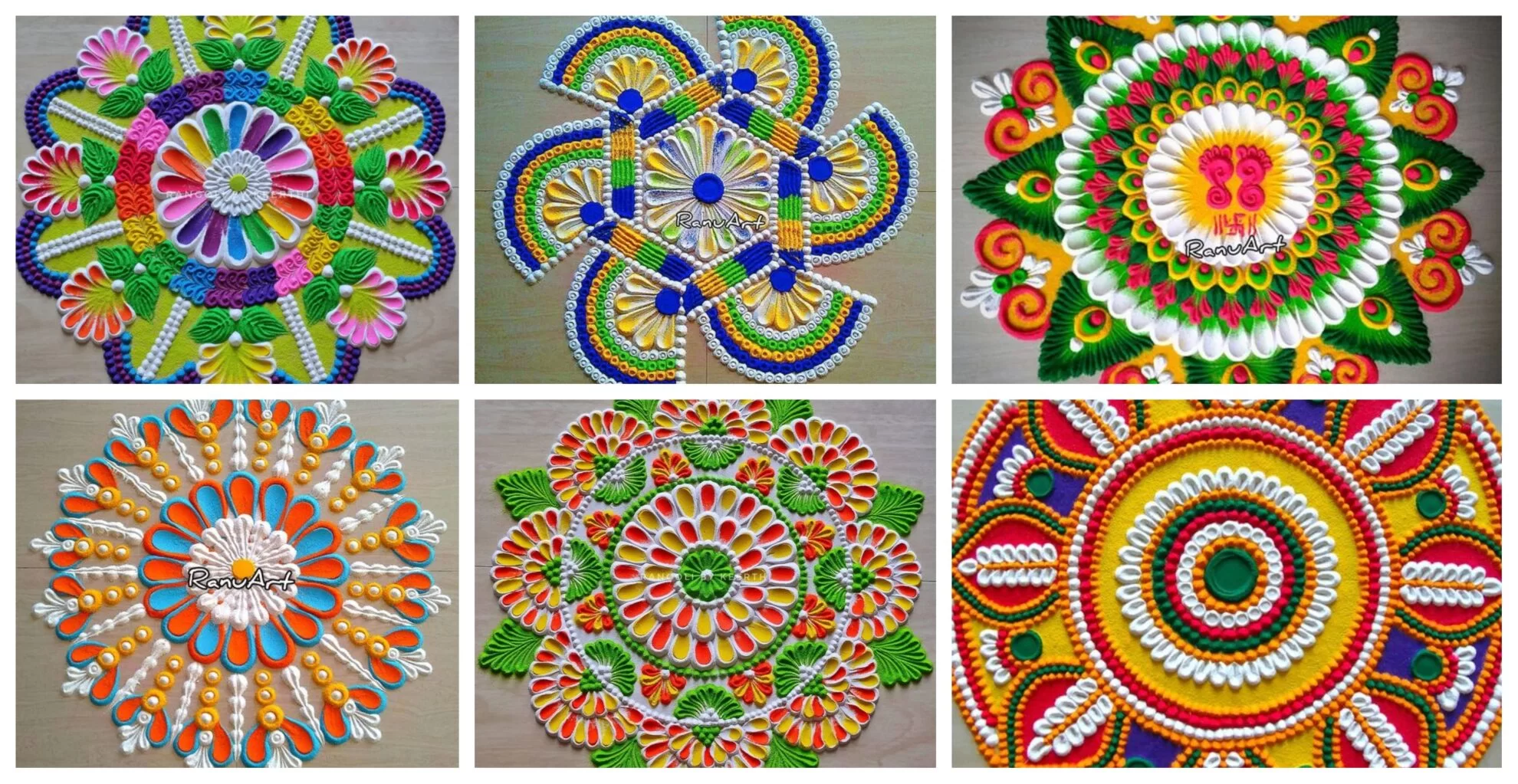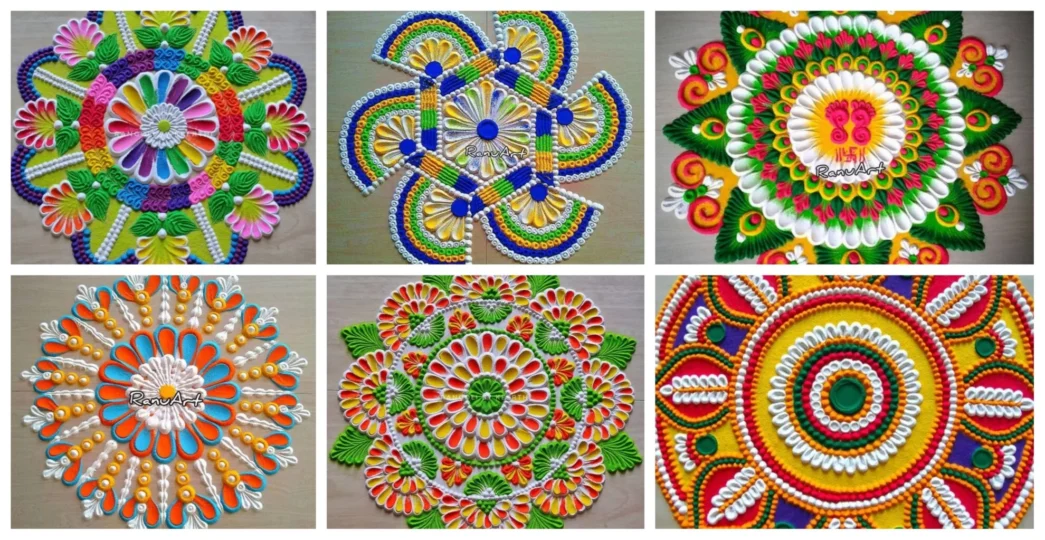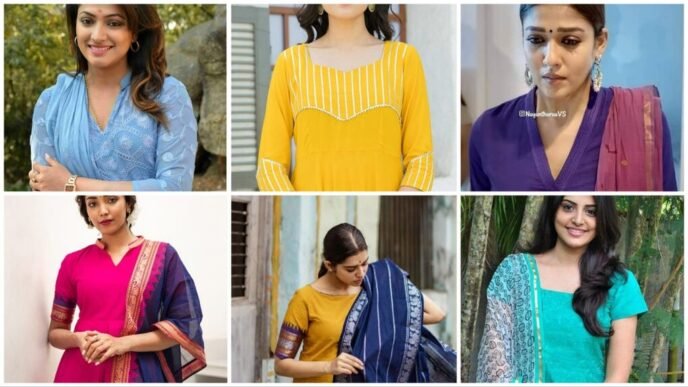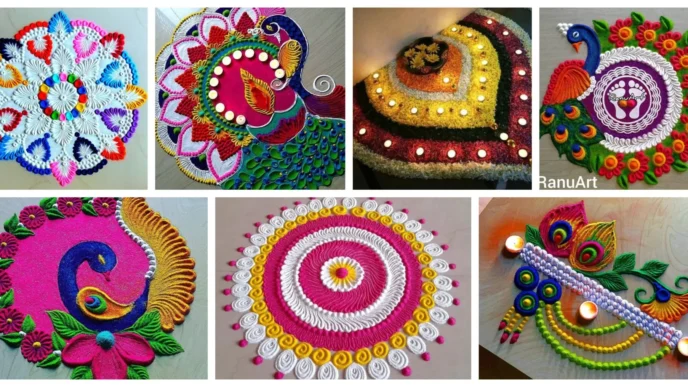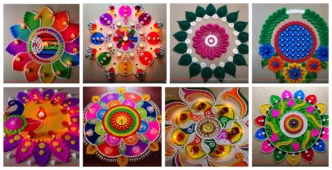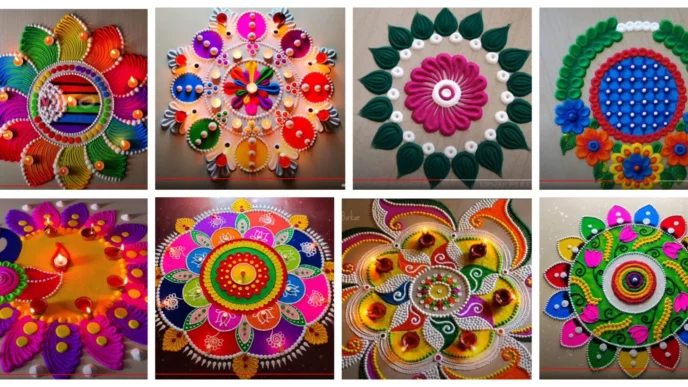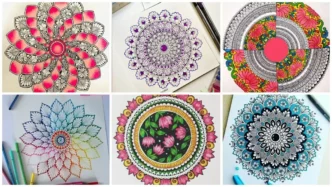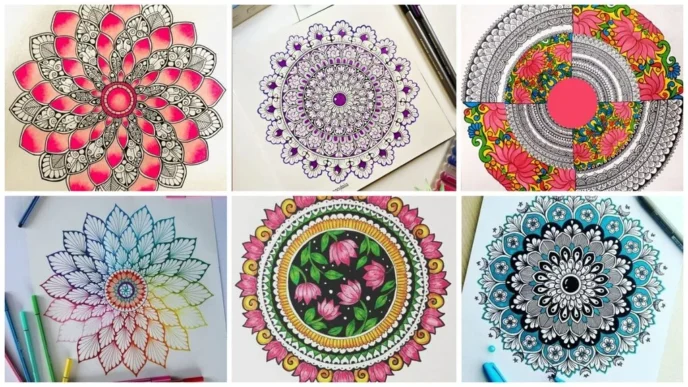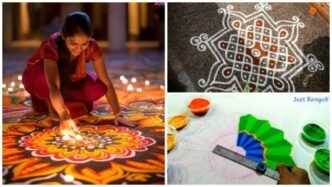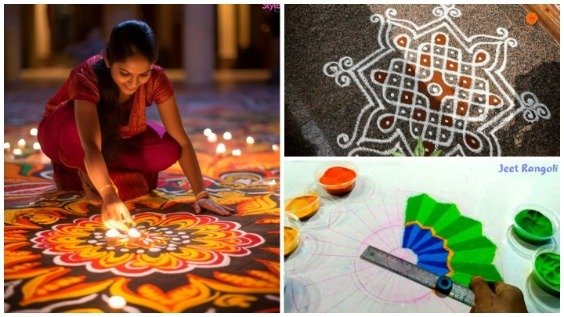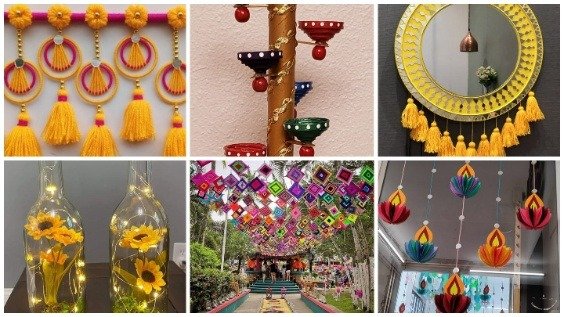Rangoli design is a type of art that has its origins in India. It is made using colors, rice flour, colorful sand, and flowers among other things. It is usually drawn on the floor on the occasion of a festival as it is considered auspicious. It is also a tradition in many Indian households to draw beautiful rangoli designs before the arrival of a guest. Simple Attractive and creative rangoli design for diwali 2023
Keeping our rich tradition and culture in mind, we bring to you a list of 51 stunning Indian rangoli patterns and designs so that you are fully prepared for the next festival. These include kolam rangoli designs and diwali rangoli designs too. You will be able to stun everyone with your artistic talent with the help of the latest rangoli designs images. Keep scrolling to find more about these beautiful Indian rangoli patterns.

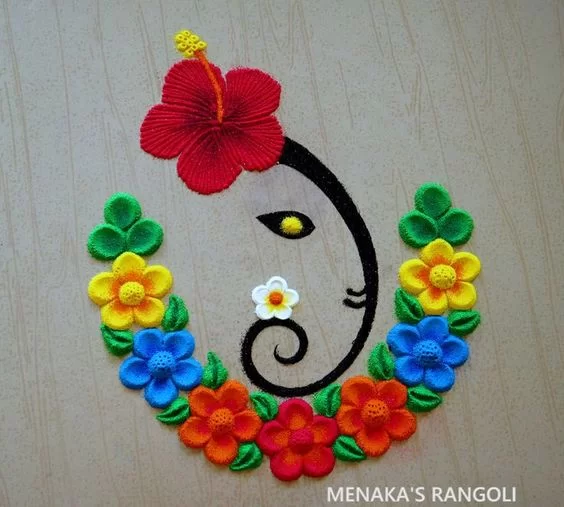
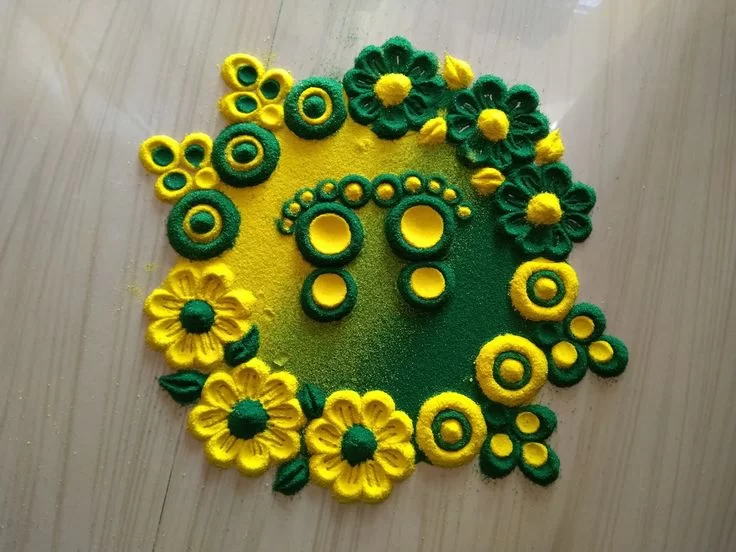





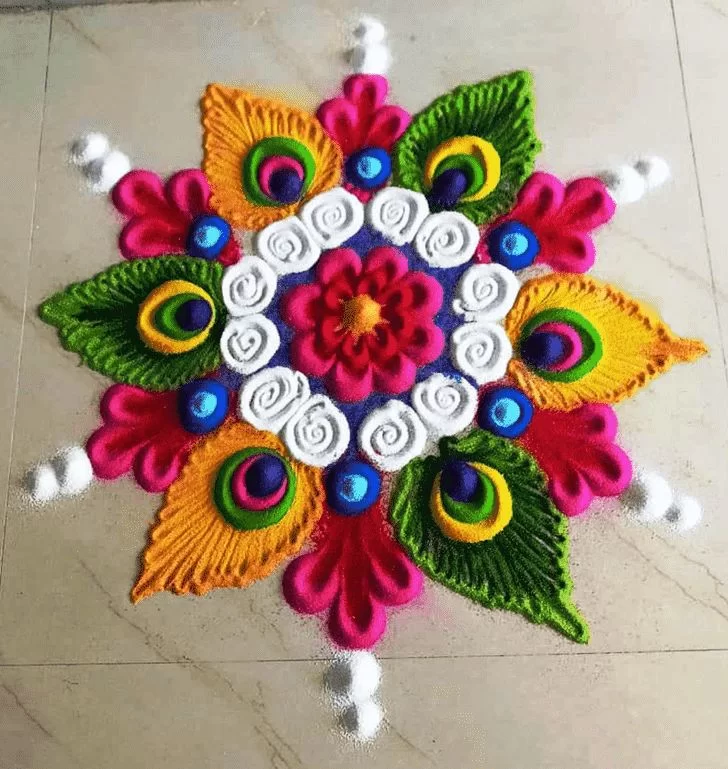

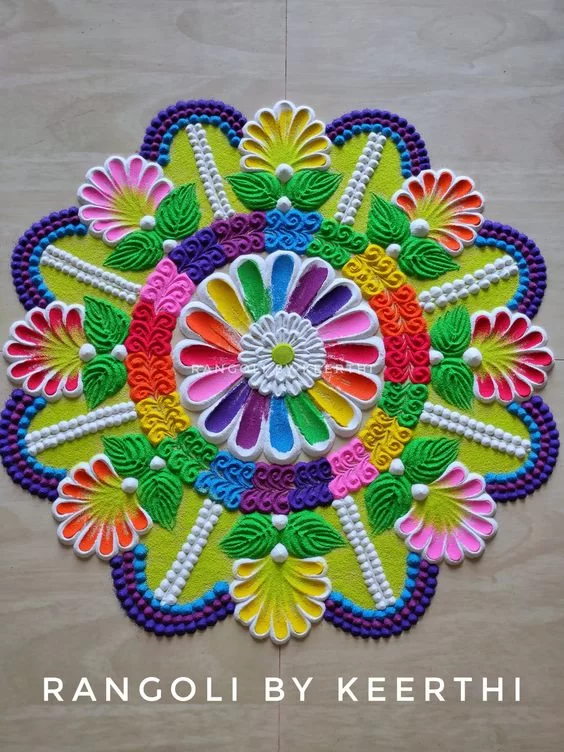
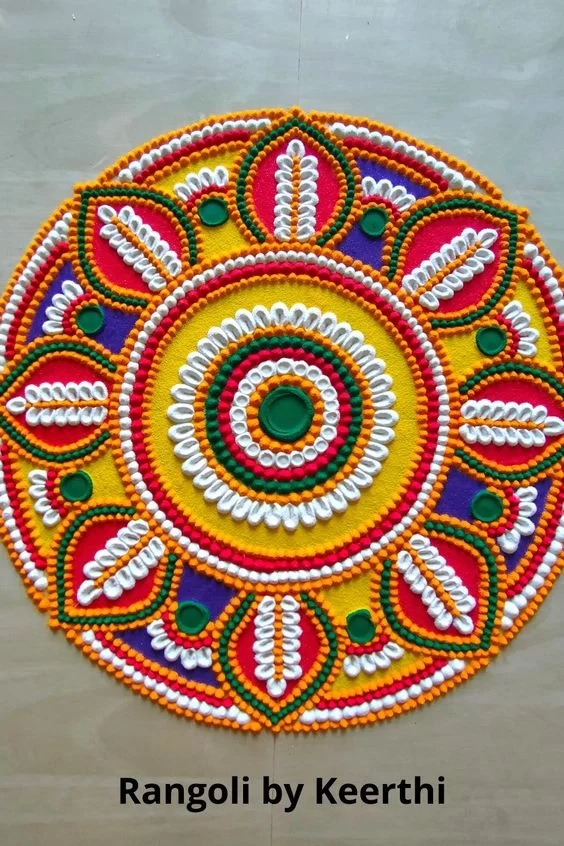




Frequently Asked Questions
1. Can anyone create rangoli designs?
Absolutely! Rangoli is an inclusive art form that welcomes artists of all skill levels.
2. What materials can I use to make rangoli?
Certainly, you can use a variety of materials to create rangoli designs. Here are some commonly used materials:
- Rice Flour: Traditional rangoli often uses rice flour due to its fine texture, making it easy to create intricate patterns.
- Colored Sand: Colored sand is a popular choice for rangoli, allowing for vibrant and long-lasting designs.
- Flower Petals: Fresh flower petals, especially marigold, rose, and chrysanthemum, add a fragrant and colorful touch to rangoli.
- Colored Powders: Vibrantly colored powders, known as rangoli or kolam powders, are readily available in various shades and can be used for intricate detailing.
- Chalk: Chalk is an excellent choice for beginners and is easily washable, making it convenient for temporary rangoli designs.
- Colored Rice: Dyed rice grains can be used for a unique and textured effect in rangoli patterns.
- Pulses and Grains: Some rangoli artists use pulses like lentils and grains like wheat to create textured and earthy designs.
- Colored Sawdust: Colored sawdust can add an interesting texture and dimension to your rangoli.
- Rangoli Stencils: Stencils are available in various designs, allowing for precise and intricate rangoli patterns.
- Decorative Elements: You can enhance your rangoli with decorative items like mirrors, beads, and sequins for added sparkle.
Remember, the choice of materials may vary based on your preferences, the occasion, and the region’s traditional practices. Feel free to experiment with different materials to create your own unique rangoli masterpiece.
3. Are there any superstitions associated with rangoli?
Yes, there are several superstitions and beliefs associated with rangoli in various cultures, particularly in India. Here are some of them:
- Warding Off Evil: One common belief is that rangoli designs, especially those created at the entrance of a house, act as a protective barrier against evil spirits and negative energies. The intricate patterns are thought to confuse and deter malevolent forces.
- Invoking Deities: Rangoli is often used during religious ceremonies and festivals to invoke the blessings of deities. It is believed that the colors and patterns attract the attention of gods and goddesses, bringing prosperity and well-being to the household.
- Bringing Good Luck: Many people believe that creating a rangoli design, especially in the morning, brings good luck and positive vibes throughout the day. It is seen as an auspicious way to start the day.
- Symbol of Welcome: Rangoli designs at the entrance of a home are also seen as a warm welcome to guests. It is believed that they invite positive energy and prosperity into the house.
- Enhancing Creativity: Some consider rangoli to be a form of creative expression that stimulates the mind and fosters creativity. Creating intricate patterns is thought to enhance one’s artistic abilities.
- Symbol of Unity: In some communities, rangoli-making is a collective activity, where members of the family or community come together to create a design. This symbolizes unity and togetherness.
- Harmony with Nature: Rangoli designs often incorporate natural elements like flower petals and rice flour. This connection with nature is believed to promote harmony and balance in life.
- Seasonal Significance: In certain regions, the choice of colors and designs in rangoli may be influenced by the seasons. For example, during harvest festivals, rangoli patterns may feature agricultural symbols to celebrate the bounty of the land.
It’s important to note that these beliefs and superstitions can vary widely among different regions and communities in India. While some people adhere to these customs fervently, others may view rangoli primarily as a form of art and decoration. Regardless of the superstitions, rangoli remains a cherished and colorful tradition in Indian culture.
4. Is rangoli only made during festivals?
While it is popular during festivals, rangoli can be created on any occasion or even as a daily ritual.
5. Can I create my own unique rangoli designs?
Absolutely! Rangoli is all about creativity, so feel free to experiment and craft your own distinctive patterns.
Rangoli design is not merely a decorative art form but a cultural treasure that binds generations. Its beauty lies in its simplicity and the way it connects people through creativity. So, the next time you see a colorful rangoli at someone’s doorstep, remember the artistry and tradition that lies beneath.
